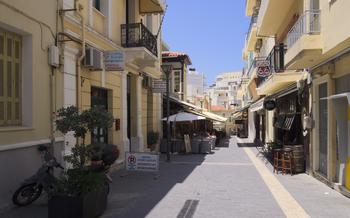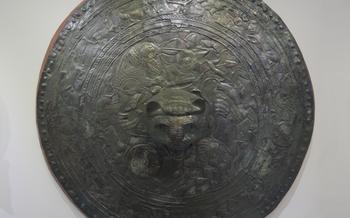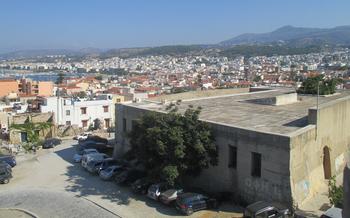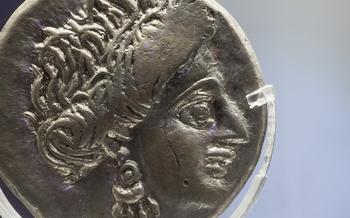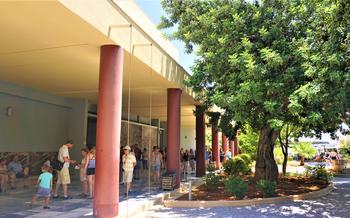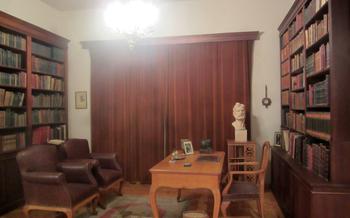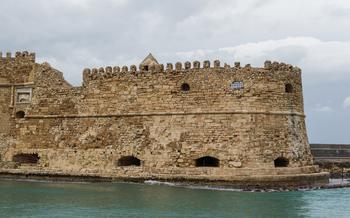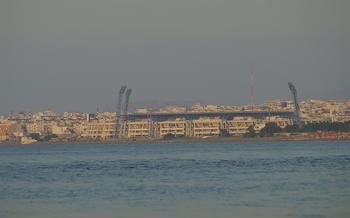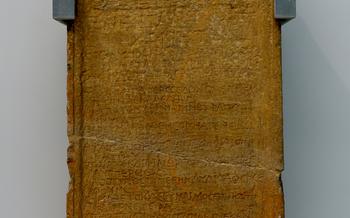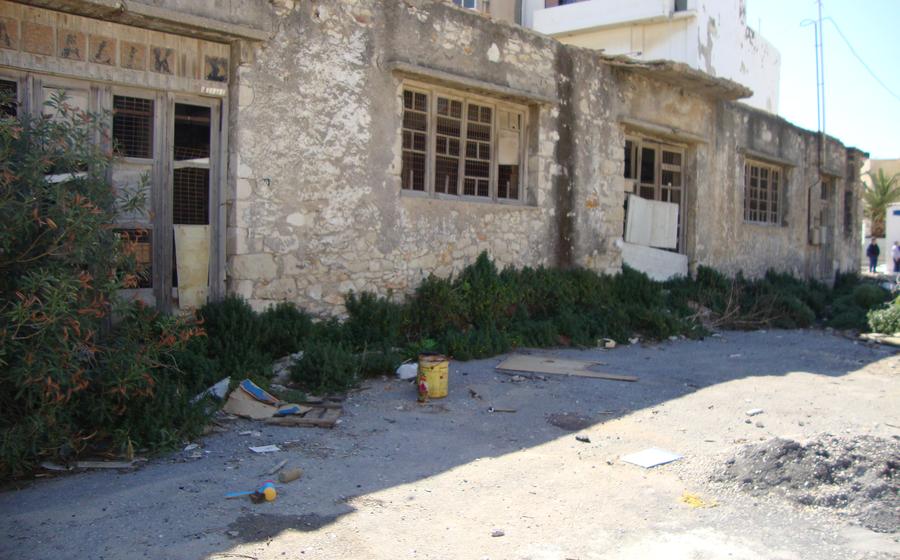
Milatos Cave
- Milatos Cave: A Hidden Gem in Crete
- Location and Accessibility
- Milatos Cave: A Place of Worship
- Exploring the Cave's Interior
- Artifacts and Discoveries
- Milatos Cave's History
- The Legend of Milatos Cave
- Guided Tours and Exploration
- Accessibility for Visitors
- Milatos Village: A Charming Destination
- Nearby Attractions and Activities
- Planning Your Visit: Tips and Considerations
- Photography and Documentation
- Safety and Precautions
- Insider Tip: Hidden Chamber
Milatos Cave: A Hidden Gem in Crete
Nestled in the rugged landscape of eastern Crete, the Milatos Cave stands as a testament to the rich history and natural wonders of the island. Once a sacred sanctuary during the Minoan civilization, this awe-inspiring cave boasts a captivating array of stalactites and stalagmites, creating an otherworldly atmosphere. Archaeological excavations have unearthed pottery, tools, and figurines, offering glimpses into the religious practices and rituals of the ancient Minoans. Guided tours are available, providing visitors with an opportunity to delve into the depths of this subterranean treasure and uncover the secrets of its past.
Location and Accessibility
Milatos Cave is located in the Lasithi region of Crete, approximately 50 kilometers east of Heraklion, the island's capital. To reach the cave from Heraklion, follow the national road towards Agios Nikolaos. After passing through the town of Malia, turn left at the sign for Milatos. The cave is a further 10 kilometers along this road, on the left-hand side.
Public transportation is also available to Milatos Cave. Buses depart from Heraklion's main bus station several times a day. The journey takes approximately 1 hour and 30 minutes. Once in Milatos, follow the signs to the cave, which is a short walk from the village center.
Milatos Cave: A Place of Worship
Milatos Cave holds immense religious significance, dating back to the Minoan civilization. The Minoans, known for their advanced culture and spiritual practices, revered the cave as a sacred sanctuary. Within its chambers, they conducted intricate rituals and ceremonies, seeking divine favor and guidance. Archaeological excavations have revealed a wealth of artifacts, including pottery and figurines, that shed light on these ancient religious practices.
Among the most significant discoveries is the association of Milatos Cave with the Minoan goddess Eileithyia, the protector of childbirth and women's health. Votive offerings, such as pottery vessels and figurines depicting pregnant women or newborns, have been found within the cave, suggesting that women sought blessings and protection from the goddess. These artifacts provide valuable insights into the Minoan belief system and the deep reverence they held for their deities.
Exploring Milatos Cave is a journey through time, allowing visitors to connect with the spiritual essence of the Minoan civilization. The cave's atmosphere, coupled with the archaeological findings, creates an immersive experience that transports visitors back to a time when nature and spirituality were intricately intertwined.
Exploring the Cave's Interior
The interior of Milatos Cave is a true spectacle to behold. As you enter the main chamber, you'll be greeted by an awe-inspiring display of stalactites and stalagmites, which have been forming for millions of years through the slow and steady dripping of water. These mesmerizing formations come in various shapes and sizes, creating a magical and otherworldly atmosphere.
The cave is divided into multiple chambers, each offering its own unique charm. As you venture deeper, you'll discover smaller chambers adorned with more intricate stalactites and stalagmites, as well as fascinating rock formations that resemble mythical creatures and ancient symbols.
To fully appreciate the cave's beauty, guided tours are available, providing insightful commentary on the geological formations and the cave's history. These tours are conducted in multiple languages, ensuring that visitors from all over the world can immerse themselves in the wonders of Milatos Cave.
For safety reasons, visitors are advised to wear sturdy footwear and follow designated paths while exploring the cave. Additionally, artificial lighting is provided to illuminate the cave's interior, allowing visitors to navigate safely and marvel at the stunning natural formations.
Artifacts and Discoveries
The Milatos Cave has yielded a wealth of artifacts that offer valuable insights into the religious practices and cultural expressions of the Minoan civilization. Among the most significant discoveries are Minoan pottery, tools, and figurines.
Pottery: Fragments of pottery discovered within the cave provide valuable information about Minoan pottery styles and decorations. These ceramic vessels, often adorned with intricate patterns and motifs, offer glimpses into the artistic traditions and craftsmanship of the Minoan people.
Tools: The discovery of stone and metal tools within the cave sheds light on the technological advancements and daily activities of the Minoans. These tools, ranging from simple scrapers to more specialized implements, provide insights into their agricultural practices, hunting techniques, and manufacturing processes.
Figurines: Perhaps the most captivating artifacts discovered in the cave are the numerous clay figurines. These small sculptures, often depicting deities, animals, and human forms, offer a glimpse into the religious beliefs and artistic expressions of the Minoan people. The figurines provide valuable insights into their pantheon of gods and goddesses, as well as their artistic and cultural traditions.
These artifacts, collectively, form an invaluable collection that contributes to our understanding of Minoan civilization and its unique cultural and religious practices.
Milatos Cave's History
The history of Milatos Cave is a tale that spans millennia, beginning in the Minoan period, when it served as a primary religious sanctuary. During this time, the cave was revered as a sacred place, and rituals and ceremonies were held within its chambers. Archaeological excavations have uncovered evidence of these ancient practices, including pottery and figurines that depict Minoan deities and religious symbols.
In the Roman and Byzantine periods, Milatos Cave continued to be used as a place of worship, albeit with modifications to accommodate the changing religious beliefs and practices of the time. During the Venetian and Ottoman periods, the cave was mentioned in historical accounts and was explored by travelers and scholars, who marveled at its geological formations and archaeological significance.
Modern excavations of Milatos Cave began in the 20th century, and these investigations have shed light on the cave's rich history and the Minoan civilization that once revered it. The discoveries made within the cave have provided valuable insights into Minoan religious beliefs, practices, and the role of the cave as a sacred sanctuary.
The Legend of Milatos Cave
Milatos Cave is steeped in mythology and folklore, adding an enchanting layer to its historical significance. According to local legends, the cave is associated with the birth of Zeus, the king of the gods in Greek mythology. It is believed that Zeus' mother, Rhea, sought refuge in the cave to give birth to him, hidden from her husband Cronus, who feared his children would overthrow him.
Stories and legends passed down through generations have woven Milatos Cave into the cultural fabric of Crete. Locals recount tales of hidden treasures, mysterious creatures, and supernatural occurrences within the cave. These legends reflect the rich mythological heritage of the island and the deep connection between the Cretan people and their ancient past.
While the historical accuracy of these legends remains a subject of debate, they undoubtedly contribute to the mystique and allure of Milatos Cave. Exploring the cave, visitors can't help but feel a sense of awe and wonder, imagining the ancient rituals and mythological events that may have taken place within its depths.
Guided Tours and Exploration
Milatos Cave offers guided tours that provide an immersive and informative experience for visitors. These tours are conducted by knowledgeable and experienced guides who share insights into the cave's history, geology, and archaeological significance. The tours are available in multiple languages, ensuring that international visitors can also enjoy and understand the cave's wonders.
Guided tours typically run several times a day, allowing visitors to choose a convenient time for their exploration. The duration of the tour is approximately one hour, providing ample time to explore the cave's main chamber and smaller chambers, marvel at the stunning geological formations, and learn about the Minoan religious practices that took place within the cave.
To ensure a seamless and enjoyable experience, it is recommended to book your guided tour in advance, especially during peak tourist season. Reservations can be made online or through local tour operators. By booking in advance, you can secure your spot and avoid any disappointment or waiting time.
Accessibility for Visitors
Milatos Cave is committed to providing a welcoming and accessible experience for all visitors. Navigating the terrain to the cave entrance is made easy with well-maintained paths and trails. For those with disabilities, the cave offers accessible features such as ramps and handrails, ensuring a safe and enjoyable exploration.
Safety precautions are of utmost importance within the cave. Visitors are advised to wear comfortable, non-slip footwear and appropriate clothing suitable for the cave environment. Additionally, visitors should be mindful of uneven surfaces and low-hanging rock formations, taking necessary precautions to avoid any accidents.
Milatos Village: A Charming Destination
Milatos Village, situated just a short distance from the cave, offers a delightful blend of traditional charm and modern conveniences, making it an ideal base for exploring the area. Stroll through its narrow cobbled streets, admire the whitewashed houses adorned with colorful flowers, and soak in the village's tranquil ambiance. Immerse yourself in the local culture by visiting the charming shops, where you can find handmade crafts, local delicacies, and souvenirs to cherish your visit.
For a culinary adventure, indulge in the flavors of authentic Cretan cuisine at one of the traditional tavernas. Savor the delectable dishes, prepared with fresh, locally sourced ingredients, while enjoying the warm hospitality of the locals. Whether you prefer a hearty meal or a refreshing drink, you'll find plenty of options to satisfy your taste buds.
If you're seeking a unique accommodation experience, Milatos offers a range of options to suit every traveler. From cozy guesthouses to charming villas, you'll find accommodations that blend modern comforts with traditional Cretan charm. Embrace the opportunity to connect with the local community and immerse yourself in the authentic Cretan way of life.
Nearby Attractions and Activities
The Milatos Cave is situated in a region brimming with captivating attractions and activities that complement your visit to this natural wonder. Bask in the sun's radiance as you explore the pristine beaches that dot the coastline, inviting you to swim in crystal-clear waters and revel in the Mediterranean's beauty. Delve into the charm of traditional villages nestled amidst picturesque landscapes, where time seems to stand still. Discover the rich history of Crete by visiting other Minoan sites in the region, each holding its own unique story. Embrace the island's adventurous spirit by embarking on hiking trails that wind through lush greenery, cycling excursions that unveil hidden gems, or water sports that provide exhilaration and serenity. With so much to see and do, the area surrounding Milatos Cave offers a harmonious blend of history, natural wonders, and outdoor pursuits, ensuring an unforgettable experience.
Planning Your Visit: Tips and Considerations
Visiting Milatos Cave is an enriching experience that deserves careful planning to ensure a smooth and enjoyable journey. Here are some practical tips and considerations to make the most of your trip:
-
Best time to visit: Milatos Cave is accessible year-round, but the ideal time to visit is during the shoulder seasons (spring and autumn), when the weather is pleasant, and crowds are smaller. Summer months can be hot and crowded, while winter may bring occasional rainfall.
-
Duration: Allocate sufficient time for your visit to fully explore the cave and its surroundings. Guided tours typically last around 45 minutes, but you may want to spend additional time admiring the cave's beauty, taking photographs, and relaxing in the serene atmosphere.
-
Combining with other attractions: Milatos Cave is located in a region rich in historical and natural attractions. Consider combining your visit with other nearby destinations, such as the Minoan palace of Knossos, the picturesque village of Elounda, or the breathtaking beaches of Vai.
-
Local customs and etiquette: Respect local traditions and customs by dressing modestly and behaving respectfully. Remember that Milatos Cave is a sacred place for many, so maintain a quiet and contemplative demeanor during your visit.
Photography and Documentation
The allure of Milatos Cave extends beyond its historical and geological significance. Its stunning visual appeal makes it a haven for photographers and enthusiasts seeking to capture its beauty. As you traverse the cave's chambers, you'll encounter a kaleidoscope of colors and textures, from the golden hues of the stalactites to the deep shadows cast by the rock formations.
While photography is permitted within the cave, it's essential to respect the fragile environment and adhere to ethical guidelines. Avoid using flash photography, as it can damage the delicate formations and disturb the natural ambiance of the cave. Instead, embrace the ambient light and use a tripod for stability, allowing you to capture the cave's essence without compromising its integrity.
Documenting your visit to Milatos Cave is a fantastic way to preserve your memories and share your experiences with others. Whether through photographs, sketches, or written accounts, your documentation will serve as a valuable record of your journey into this ancient sanctuary. Consider creating a travel blog or sharing your experiences on social media platforms, inspiring others to embark on their own explorations of Crete's hidden gems.
Remember, the beauty of Milatos Cave lies in its pristine and untouched state. As you explore and document your visit, tread lightly and leave no trace behind. Embrace the opportunity to immerse yourself in the cave's timeless atmosphere, capturing its essence without compromising its delicate balance.
Safety and Precautions
Exploring Milatos Cave requires adherence to specific safety measures to ensure a safe and enjoyable experience. Here are some essential precautions to consider:
-
Emergency preparedness: Familiarize yourself with emergency contact information and procedures. In case of any unforeseen circumstances, knowing whom to contact and what steps to take is crucial.
-
Navigating uneven terrain: The path leading to the cave entrance involves uneven terrain. Wear appropriate footwear with good grip to prevent slips and falls.
-
Health considerations: Stay hydrated throughout your exploration, as the cave's environment can be dry. Additionally, dress appropriately for the weather conditions, as the temperature inside the cave can be cooler than outside.
-
Respecting the natural environment: Milatos Cave is a natural wonder that deserves our respect and protection. Avoid touching or damaging the stalactites and stalagmites, as they are fragile and irreplaceable. Additionally, refrain from leaving any trash behind to preserve the cave's pristine condition.
Insider Tip: Hidden Chamber
In the depths of Milatos Cave, a hidden chamber awaits discovery. This secret chamber, concealed within the cave's intricate network of passages, was discovered by archaeologists during recent excavations. Accessible only with the guidance of an experienced guide, the hidden chamber offers a unique glimpse into the cave's past.
The chamber is a treasure trove of archaeological wonders, boasting well-preserved artifacts and formations that provide valuable insights into Minoan culture and religious practices. Unearthed pottery, tools, and figurines offer a tangible connection to the ancient inhabitants of the cave.
Exploring the hidden chamber is an unforgettable experience that transports visitors back in time. With the guidance of a knowledgeable guide, you can delve into the secrets of Milatos Cave and uncover its hidden treasures, gaining a deeper appreciation for the rich history and cultural significance of this remarkable place.
